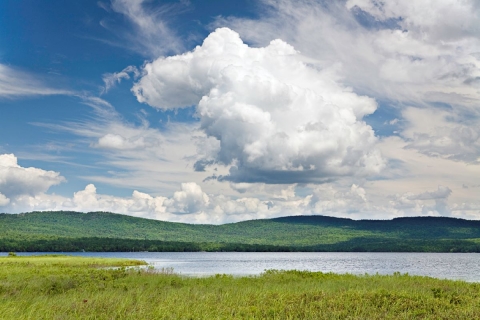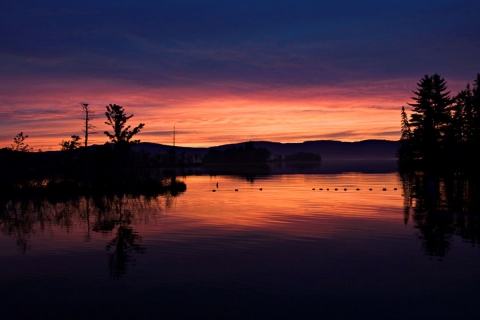About Us
Our Mission
“We envision Umbagog National Wildlife Refuge as an essential link in the network of conservation lands in the Northern Forests. We will showcase sciencebased, adaptive management in a working forest landscape and provide an outstanding center for research. We will achieve this through strong partnerships with State agencies, conservation organizations, land managers, and neighboring communities.
“Our management will perpetuate the diversity and integrity of upland spruce-fir and northern hardwood forests, boreal and riverine wetlands, and lake habitats for the continued health of native fish and wildlife populations. These habitats will provide an important regional breeding area for migratory land birds, waterfowl, and other species of regional significance, such as the common loon and bald eagle.
“Visitors of all ages will feel welcome to enjoy the full complement of priority wildlife-dependent public uses. We will foster their knowledge of and support for conserving northern forest habitats through exceptional outreach and visitor programs. We want all our visitors to return home filled with enthusiasm for promoting and practicing resource stewardship in their own communities.
“We hope residents of neighboring communities in Maine and New Hampshire will value the refuge for enhancing their quality of life. Within the National Wildlife Refuge System, the refuge will be treasured for conserving Federal trust resources and providing inspirational outdoor experiences for present and future generations of Americans.”
Umbagog National Wildlife Refuge Purposes
- To conserve wetlands of the Nation in order to maintain the public benefits they provide and to help fulfill international obligations contained in various migratory bird treaties and conventions (Emergency Wetlands Resources Act of 1986)
- For migratory bird management purposes (Migratory Bird Conservation Act (February 18, 1929)
- Development, advancement, management, conservation, and protection of fish and wildlife resources (FW Act of 1956)
- For the benefit of the U.S. Fish and Wildlife Service in performing its activities and services (The Fish and Wildlife Act 16th USC 742f(b)(1))
National Wildlife Refuge System Mission and Goals
Mission
The mission of the System is to administer a national network of lands and waters for conservation, management, and where appropriate, restoration of fish, wildlife and plant resources and their habitats within the United States for the benefit of present and future generations of Americans. (National Wildlife Refuge System Improvement Act of 1997)
Goals
- To preserve, restore, and enhance in their natural ecosystems (when practicable) all species of animals and plants that are endangered or threatened with becoming endangered;
- To perpetuate the migratory bird resource;
- To preserve a natural diversity and abundance of fauna and flora on refuge lands; and
- To provide an understanding and appreciation of fish and wildlife ecology and man's role in his environment and to provide refuge visitors with high quality, safe, wholesome and enjoyable recreational experiences oriented toward wildlife to the extent these activities are compatible with the purposes for which the refuge was established.
Our History
The refuge was established in 1992 as a result of a long-term cooperative effort between the states of Maine and New Hampshire, conservation organizations, timber companies, and the U.S. Fish and Wildlife Service. It was established to conserve and manage high-quality wetland and upland habitats that are essential to the success of migratory birds, species of conservation concern, and rare plant communities.
The region has been inhabited by humans for over 11,000 years. The Anasagunticooks, an Abenaki Native American tribe, lived in the Umbagog area on the Androscoggin River. When early European settlers arrived they harvested timber and built dams to transport logs to mills farther south. The stewardship of large paper companies who owned much of this land resulted in the Umbagog region's relatively pristine condition, which is now conserved by the refuge.

